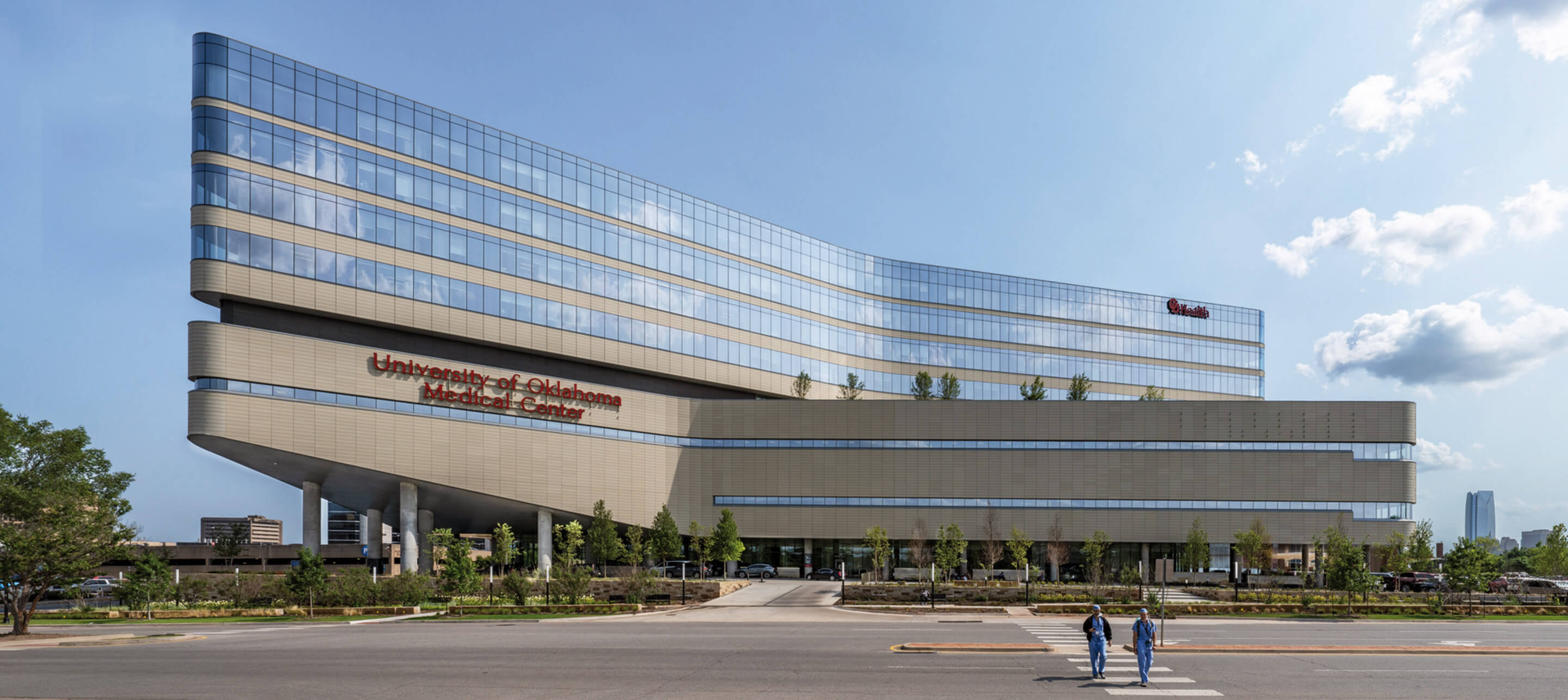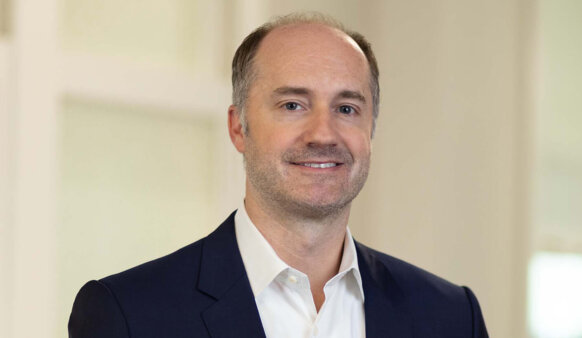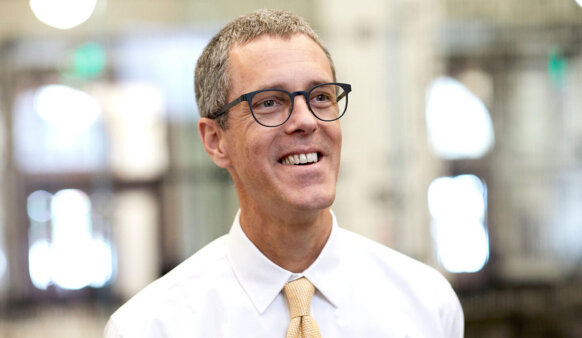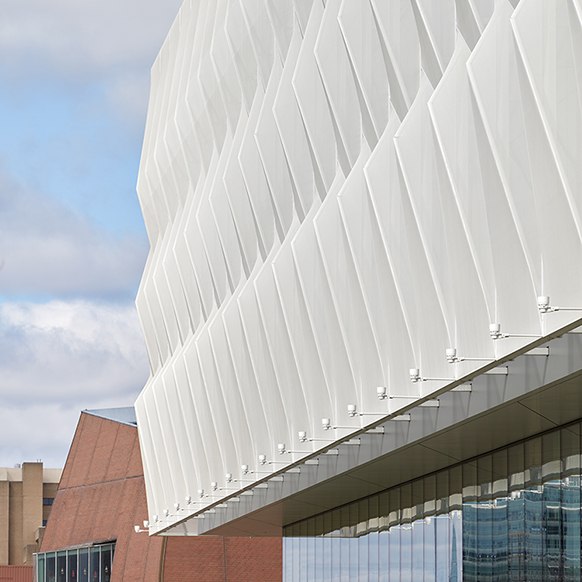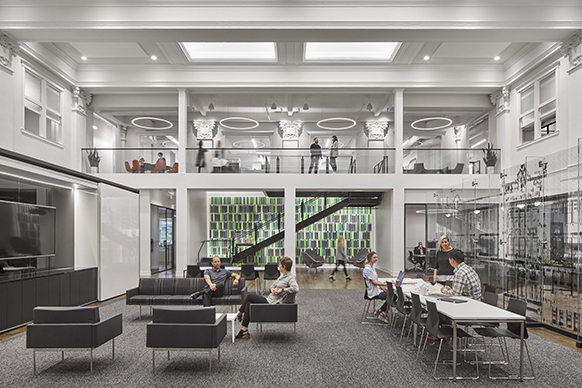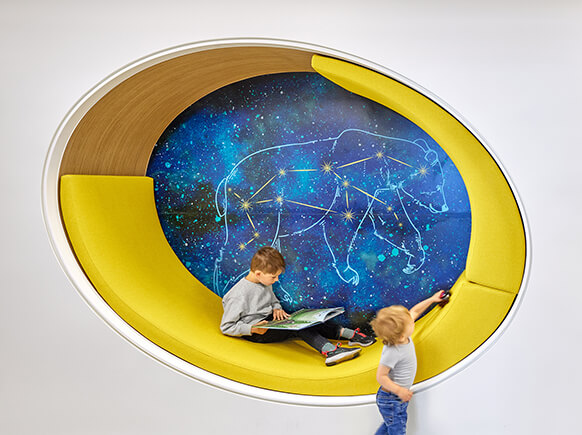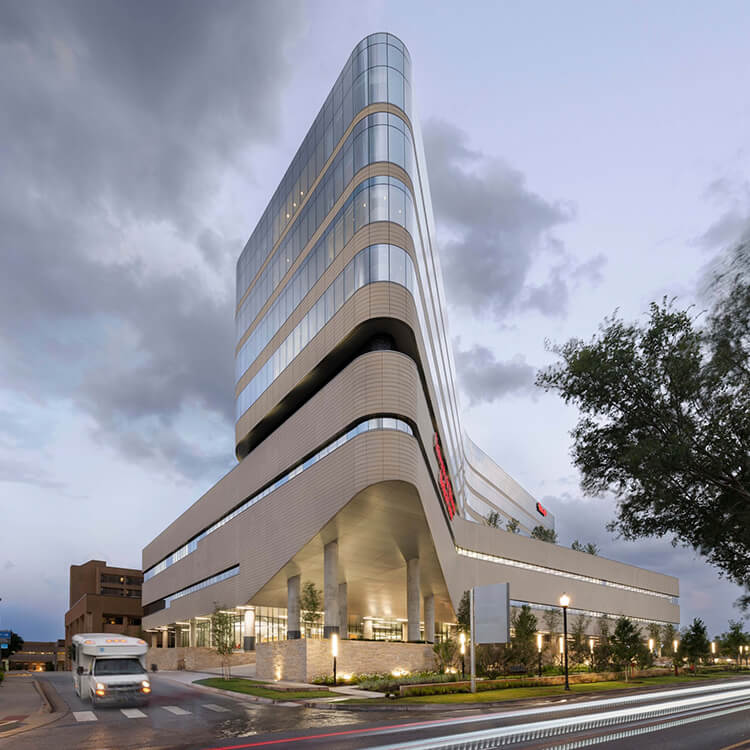
University of Oklahoma Medical Center Expansion
There is only one Level 1 trauma center in the state of Oklahoma. More patients needed acute care than it could serve, so health leadership planned a 144-bed patient tower to significantly expand surgical, medical-surgical nursing, and critical care capacity. We developed the tower—the largest hospital expansion in Oklahoma’s history—into a distinct gateway to the medical campus, while ensuring a seamless fit with the existing hospital.
The building’s fluid architecture evokes Oklahoma’s windswept geological formations. This inviting form tempers the hospital’s institutional nature and visual bulk, while resilient design elements protect against the state’s extreme weather events.
Recognizing the mental and physical healing power of nature, our designers distributed views and access to vegetated outdoor spaces throughout the project. Extensive sightlines from patient rooms add to the sense of openness and connectivity to the surrounding neighborhood.
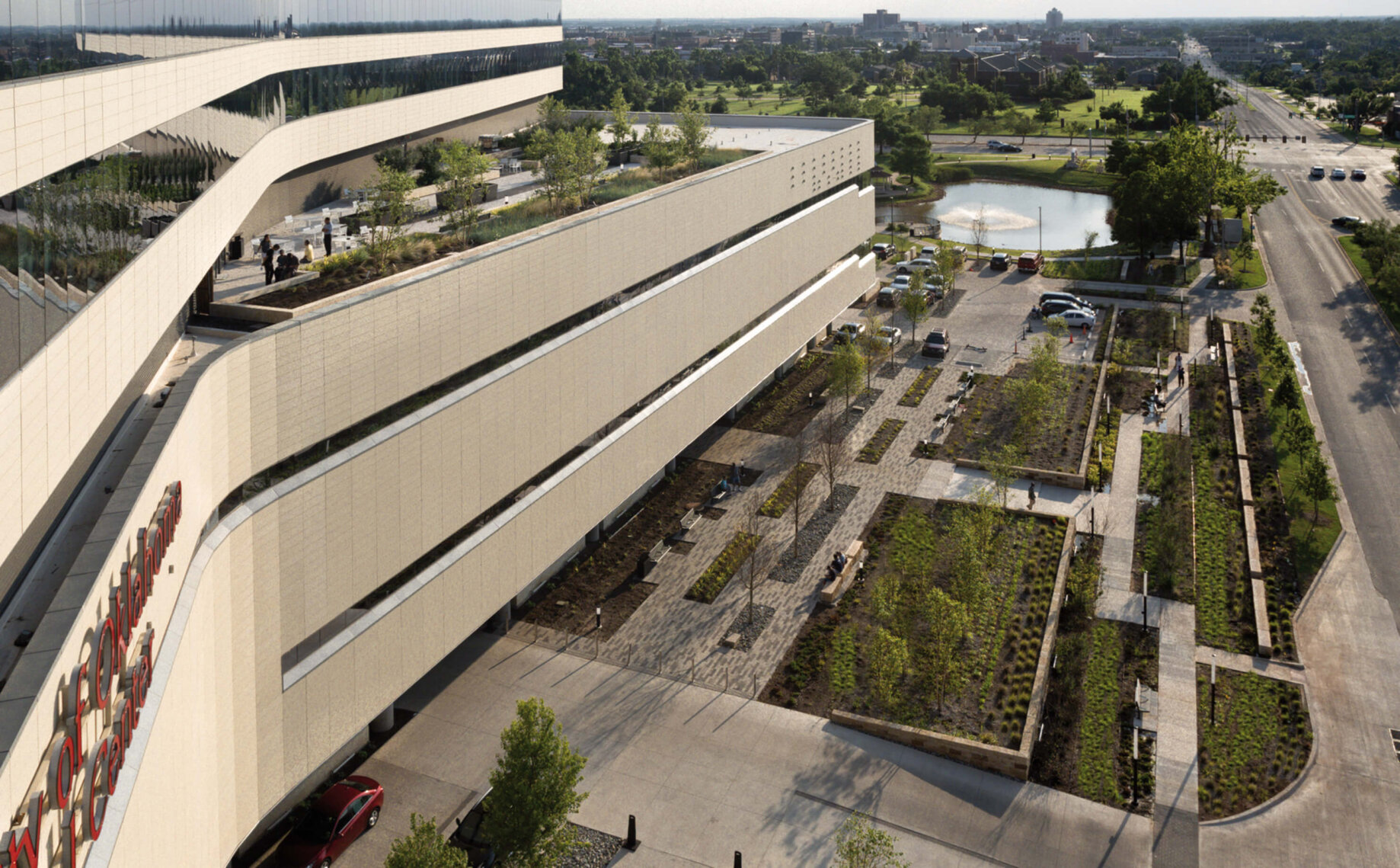
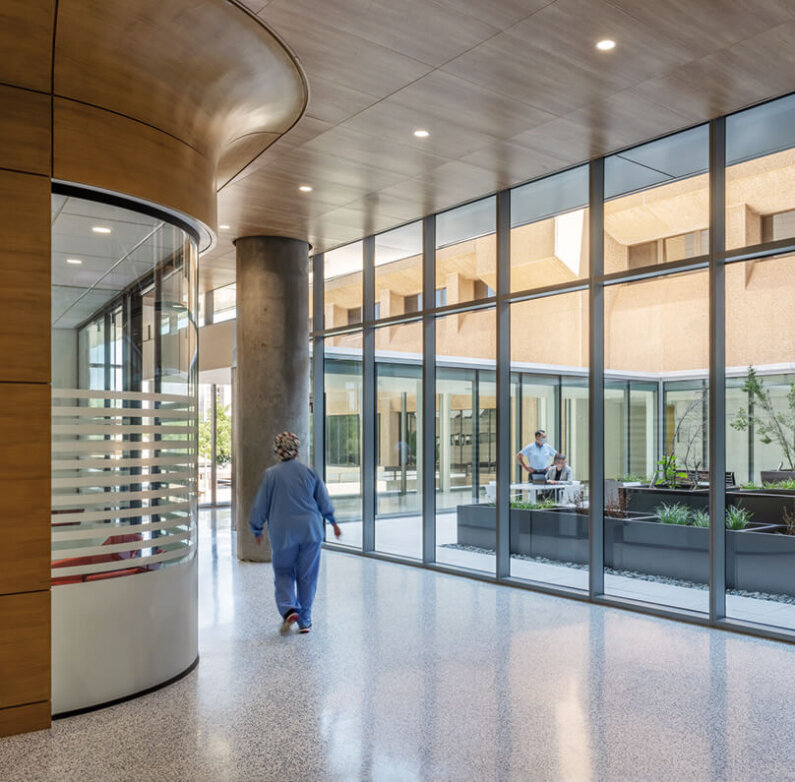
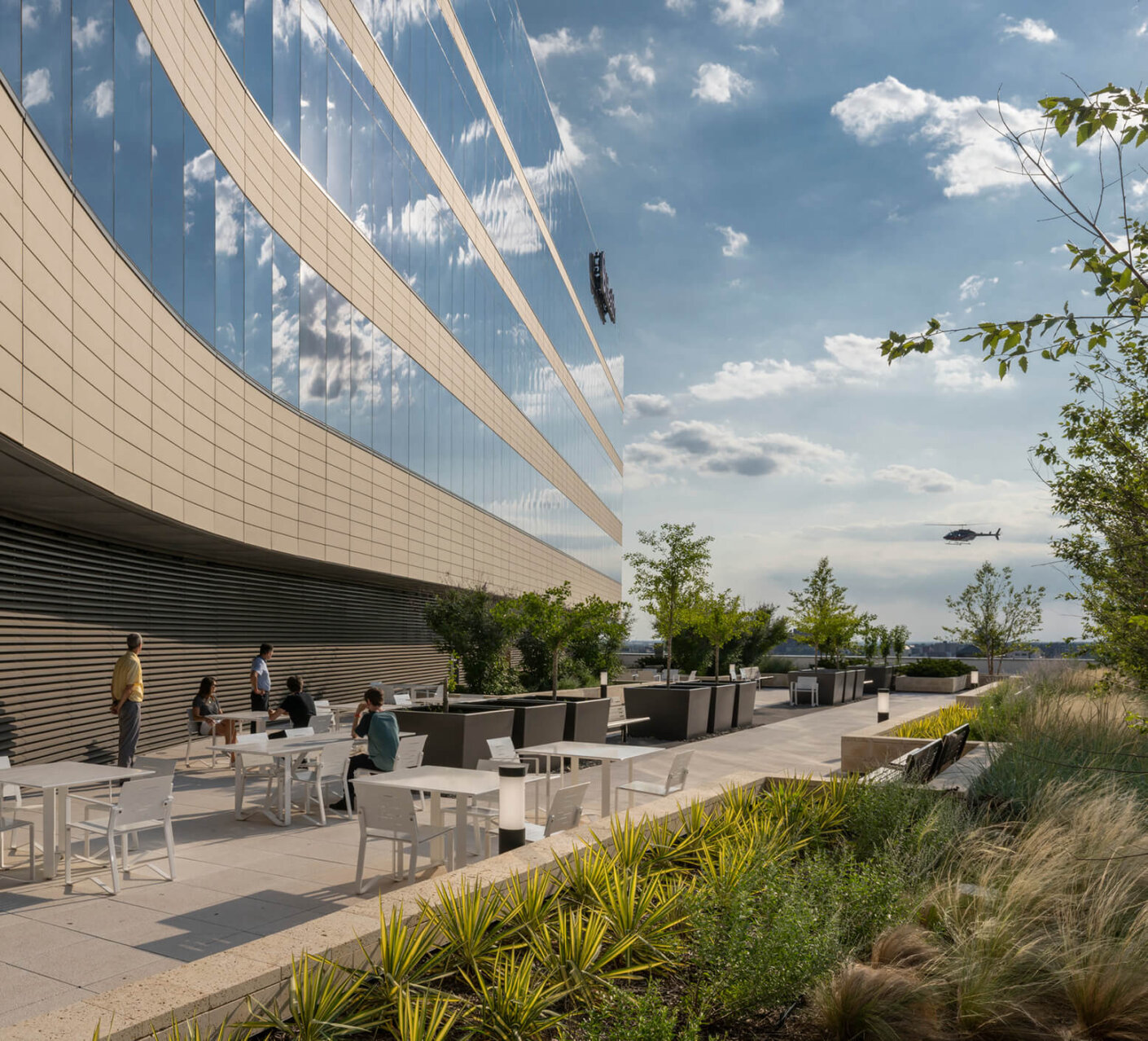
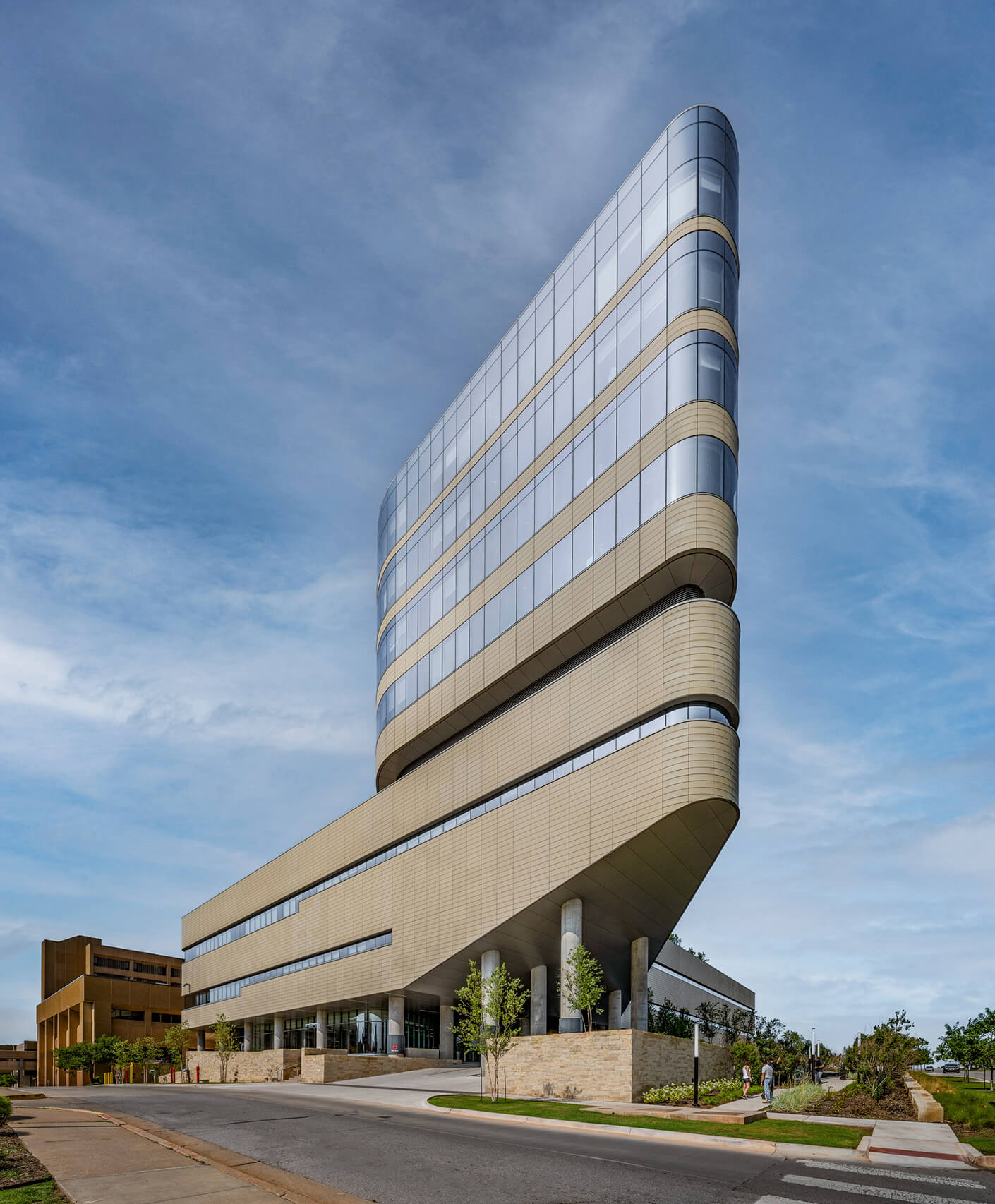
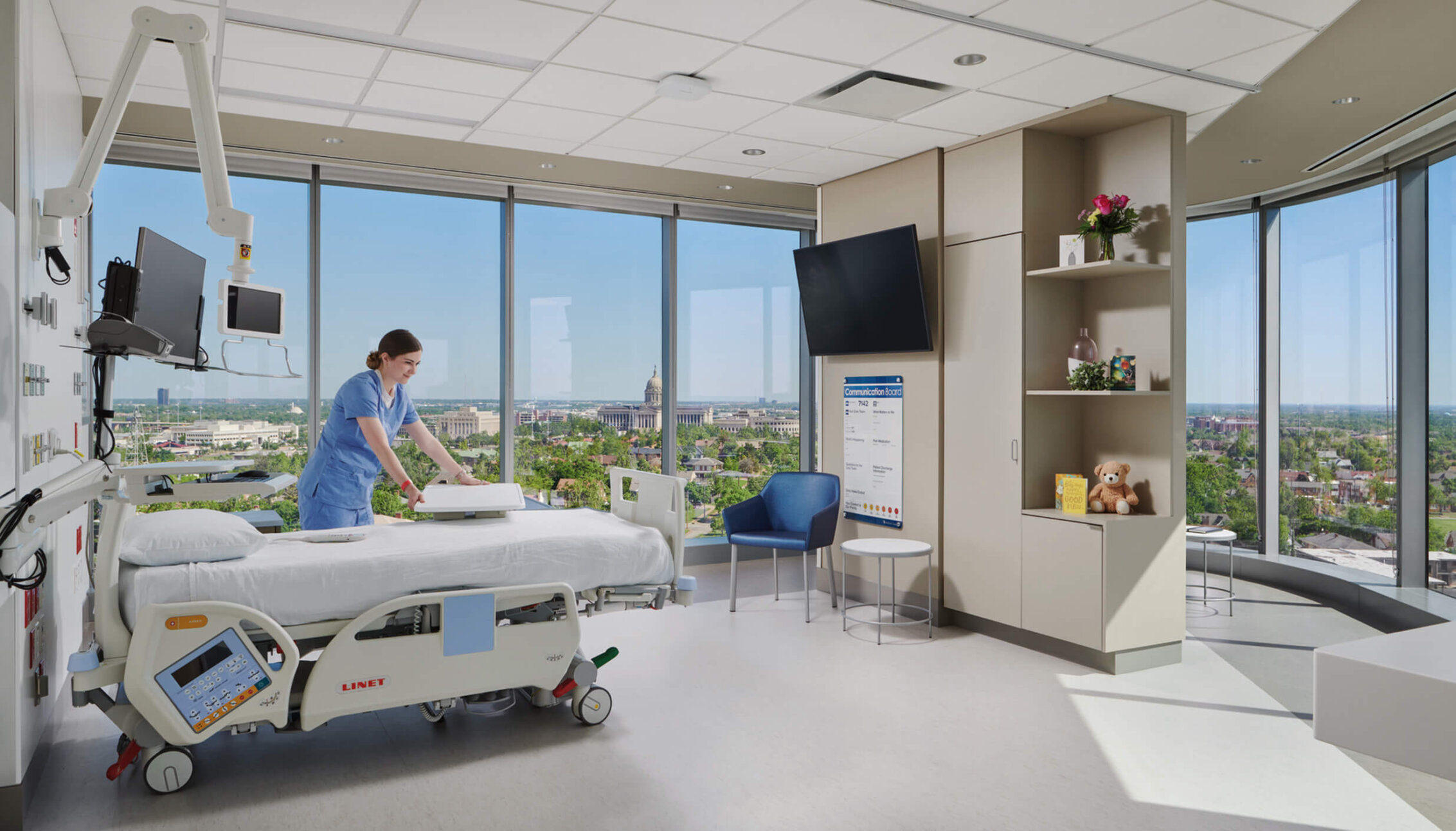
Patient rooms are always on an exterior wall. From the tower, views include the downtown skyline and the Oklahoma State Capitol.
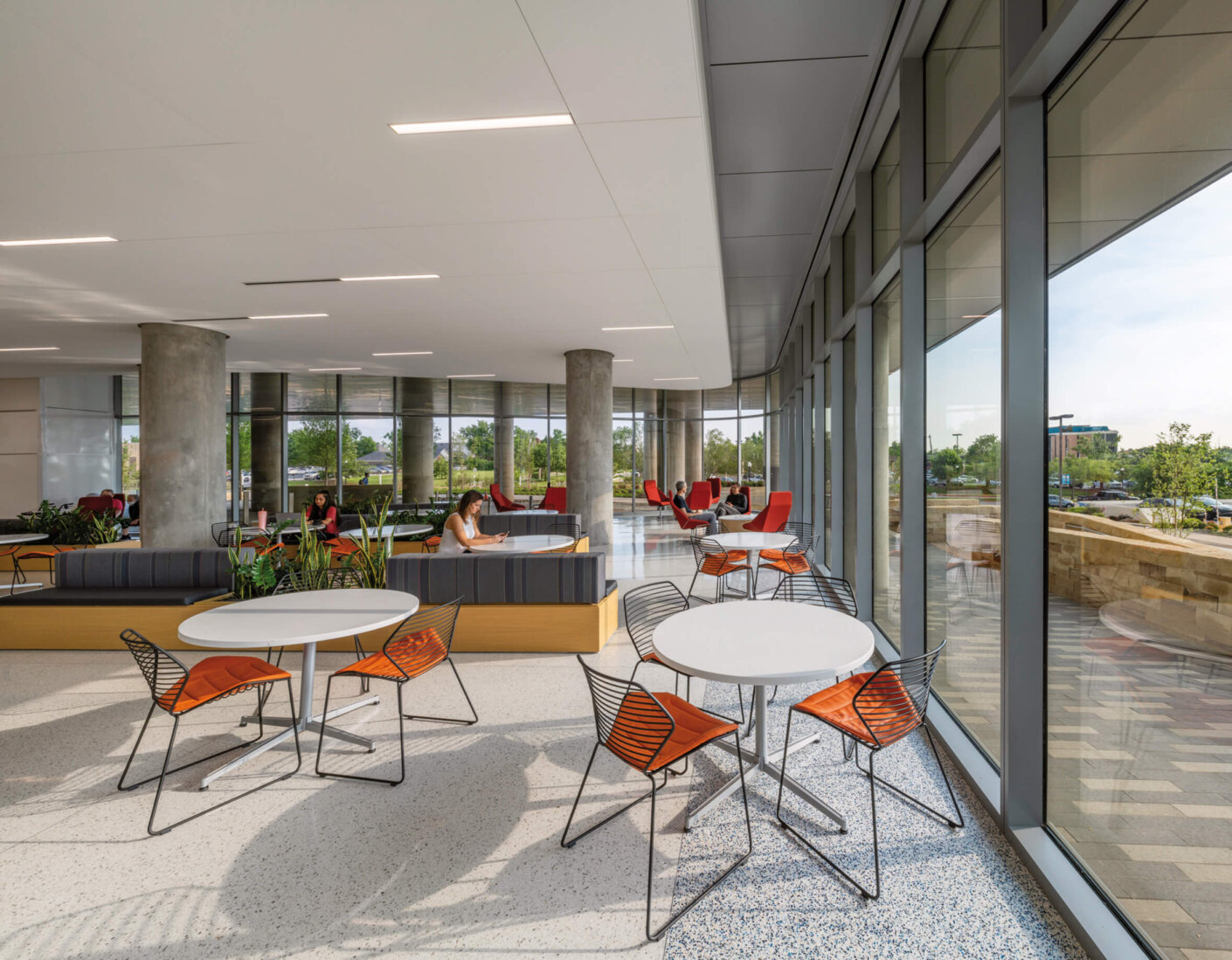
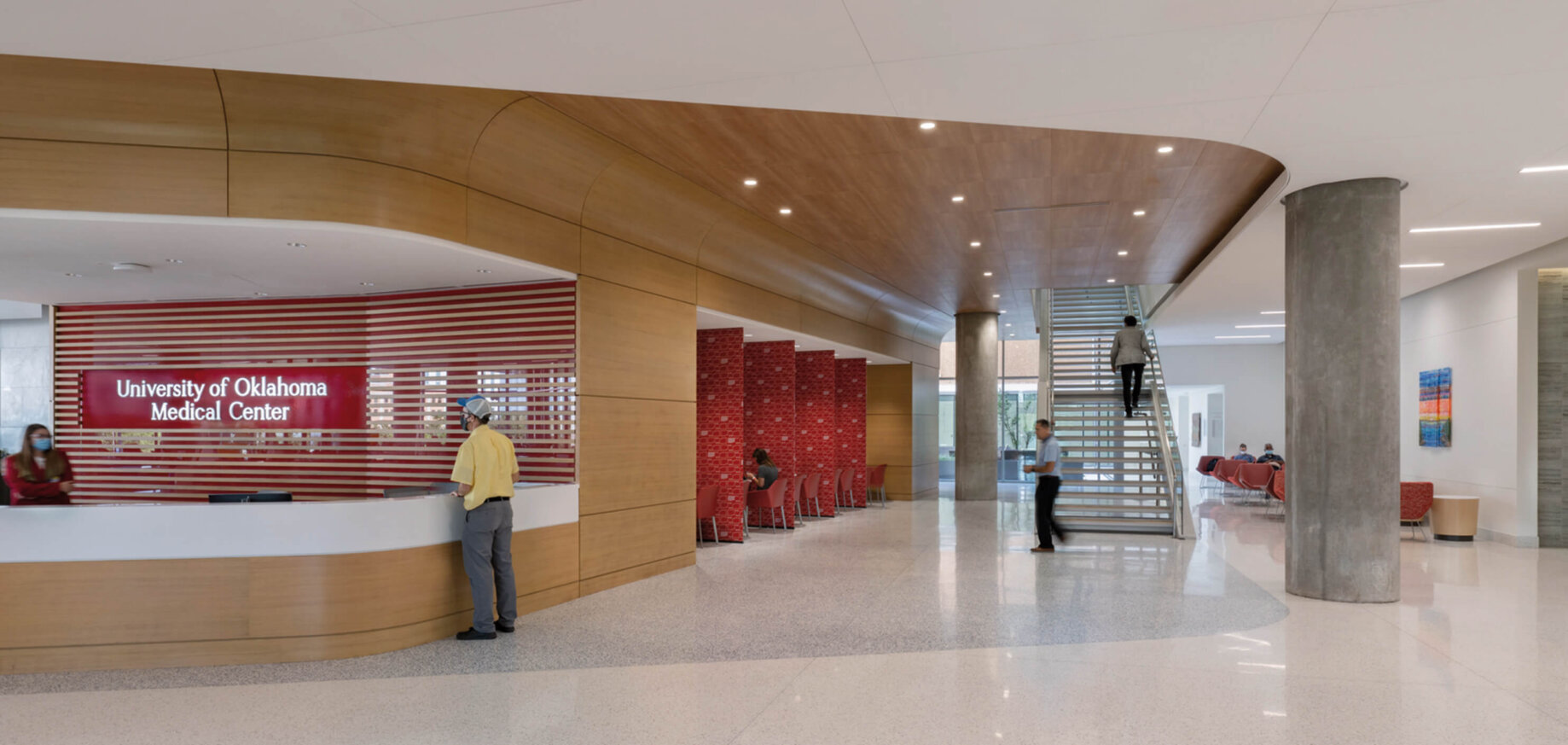
Resilient design strategies include critical-care floors with impact-resistant glazing, a top floor that can be easily converted to an epidemic/isolation floor with independent supply and exhaust air, and in-grade radiant heating at the entry zone. The project is a pilot for the RELi Resilience Action framework.

